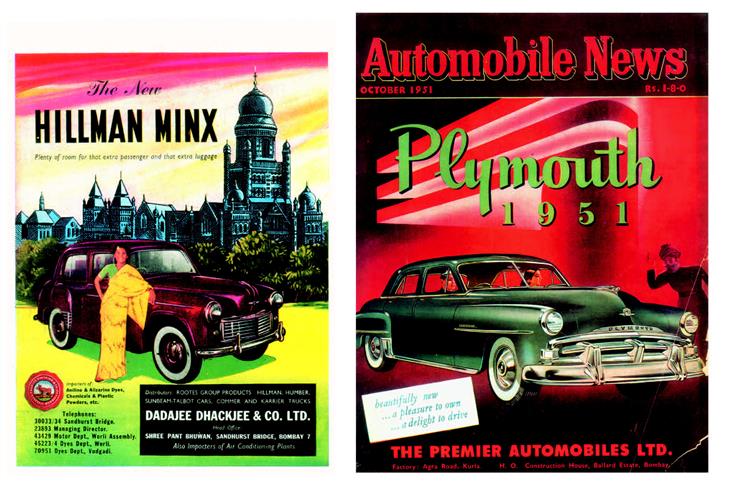Motoring in India: The Wonder Years
What were the cars on Indian roads in 1947? What cars could you buy? Get ready to be surprised.
What were the cars on Indian roads in 1947? What cars could you buy? Get ready to be surprised.
On Mumbai’s Peddar Road, till a few years ago, was a GM showroom called National Garage. It was just another showroom of General Motors where you could walk in and buy the Chevrolet you want.
Back in 1947, you could walk into the same premises and drive out in the latest General Motors motorcar. Yes, at the time, 67 years ago, you could buy a Chevrolet, or a Fiat, a Ford, a Renault or a Skoda, very much like you do today. If you wanted, you could even buy a Buick, Daimler, Oldsmobile, Studebaker, Triumph, Hudson or some other car. In fact, in 1947, the Dodge, De Soto and Plymouth were being assembled at the Premier plant in Kurla. GM was assembling its cars at a plant in Sewree.
It wasn’t only in Bombay (now called Mumbai) that cars were being assembled. There were also assembly plants in Calcutta (now Kolkata) and Madras (now Chennai).
The first motorcar on the streets of India was seen in 1898, Bombay had its first taxicabs by the turn of the century. In 1903, an American company began a public taxi service with a fleet of 50 cars. For about 50 years after the first car arrived in India, cars were directly imported.
Before World War I, around 40,000 motor vehicles were imported. During the years between the wars, a small start for an automobile industry was made when assembly plants were established in Bombay, Calcutta and Madras.

The import/ assembly of vehicles grew consistently after the 1920s, crossing 30,000 units by 1930. It was during the end of the war that the importance of establishing an indigenous automobile in India was realised. Premier Motors, Hindustan Motors and Mahindra & Mahindra set up factories in the 1940s for progressive manufacture rather than assembly from imported components. The cars they chose to make were the latest in the world when they were introduced in India in the formative years of the industry.
Post-independence, the government clamped down on imports and foreign investments. Companies like GM and Ford packed their bags and left. India’s clock, thereafter, stood still while the world raced on ahead. It would take nearly 50 years before the Indian auto industry could catch up with the rest of the world again.

RELATED ARTICLES
Branded content: HL Klemove inaugurates first Local ADAS Radar Manufacturing Unit in India, marks a significant achievement in “Make in India” initiative
The inauguration ceremony was held in the presence of Vinod Sahay, President and CPO of Mahindra & Mahindra Ltd. and Dr....
BluWheelz to 'Green Up' logistics sector
With their EVs-as-a-service solution, the startup is playing it smart with costs and looking to electrify the entire seg...
BRANDED CONTENT: Spearheading the EV revolution in India
Jio-bp is a joint venture between Reliance Industries and BP PLC where both entities have married international expertis...





 14 Aug 2014
14 Aug 2014
 8745 Views
8745 Views





 Autocar Pro News Desk
Autocar Pro News Desk




